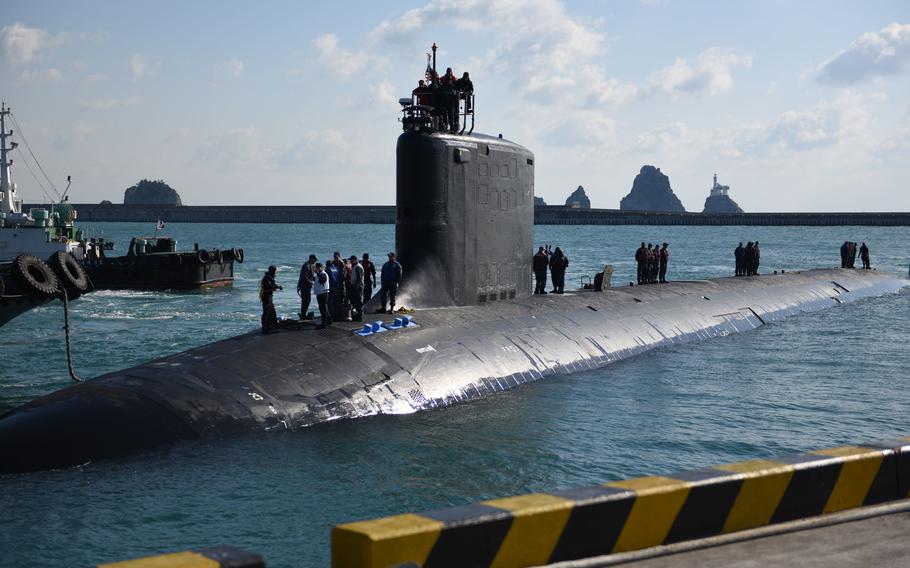
The USS North Carolina, seen here at Busan, South Korea, on Feb. 16, 2016, arrived at an Australian naval base Aug. 4, 2023, the first visit by a U.S. boat since an agreement with the U.S. and U.K. to supply Australia with its own nuclear-powered subs.
(Jermaine M. Ralliford/U.S. Navy)
A U.S. nuclear-powered submarine pulled into an Australian naval base last week, the first step in establishing a rotational submarine force meant to prepare the country for its own fleet of nuclear subs, according to the Navy.
The Virginia-class attack submarine USS North Carolina on Friday steamed into HMAS Stirling, a naval base in western Australia, where its crew is expected to help their Australian counterparts learn to “safely operate, maintain and regulate” nuclear submarines and set the “highest standards for nuclear non-proliferation,” the U.S. Pacific Fleet said in a news release that day.
The port call is the opening step in a deal between the AUKUS allies — the United States, Australia and the United Kingdom — to outfit Australia with a fleet of eight nuclear submarines.
The deal is expected to cost Australia up to 368 billion Australian dollars, or $240 billion, over 30 years.
Under the deal’s “Optimal Pathway,” phase one includes frequent visits by U.S. attack subs to familiarize Australian service members with the ships and begin establishment of Submarine Rotational Force West at HMAS Stirling by 2027, according to the news release. The joint effort includes regular visits from four U.S. Virginia-class subs and one U.K. Astute-class sub.
“These port visits are an essential step for Australia to build the necessary operational capabilities and skills to steward and operate its own fleet of nuclear-powered attack submarines,” Abe Denmark, senior advisor for AUKUS to U.S. Secretary of Defense Lloyd Austin, said in the news release.
HMAS Stirling is an operational and logistics hub for Australia’s navy and home to Anzac-class frigates, Collins-class submarines and facilities such as the Submarine Training and Systems Centre, according to the Australian navy’s website.
The U.S. in the second phase plans to sell Australia at least three Virginia-class subs — and potentially two more — in the early 2030s, provided Congress approves the sale.
Australia in the third phase would start building the new AUKUS-class submarine using a British “base submarine design” and U.S. technology. Australia expects the first of the new subs by the 2040s, where it would become the “future attack submarine” for the two Commonwealth countries.
Unveiled March 13, the AUKUS deal is part of an effort to counter Chinese expansionism in the Indo-Pacific.